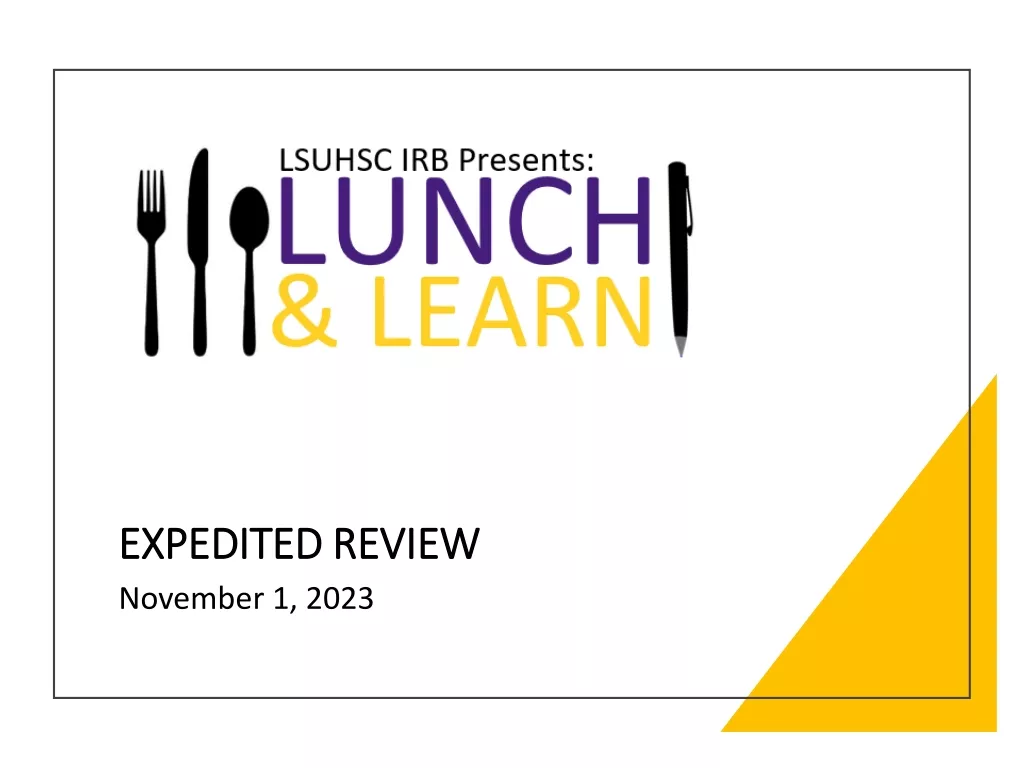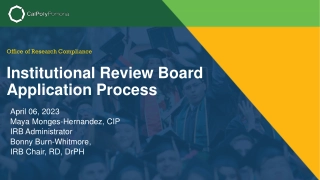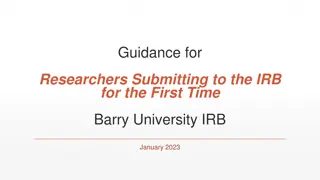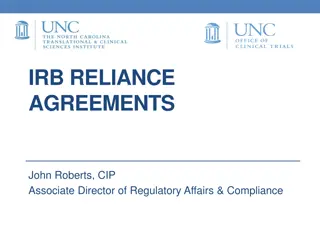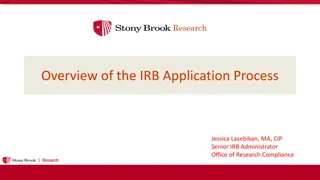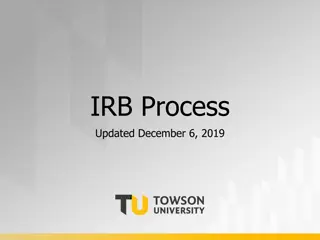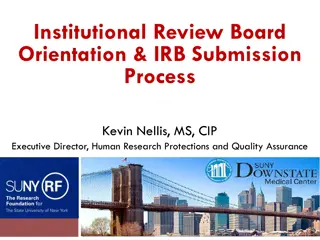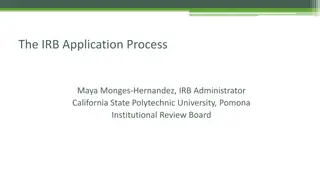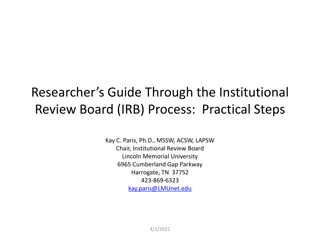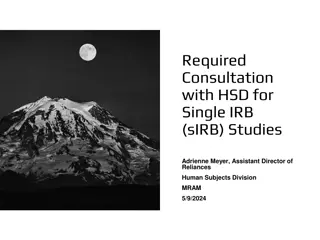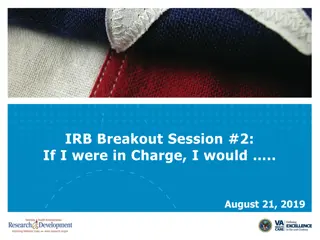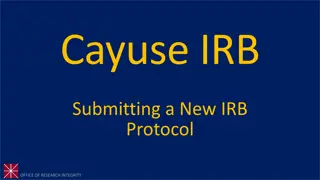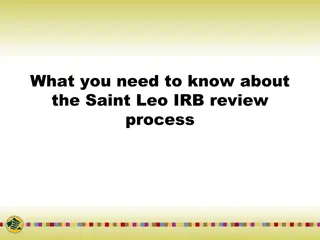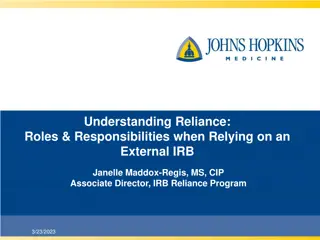IRB Applications
Reviewing IRB applications involves checking for completion of necessary information, ensuring proper student researcher listing with faculty sponsor, verifying logical data collection dates and participant numbers, reviewing research design, assessing instruments used, examining recruitment and selection procedures, and confirming appropriate informed consent forms are included.
Download Presentation

Please find below an Image/Link to download the presentation.
The content on the website is provided AS IS for your information and personal use only. It may not be sold, licensed, or shared on other websites without obtaining consent from the author.If you encounter any issues during the download, it is possible that the publisher has removed the file from their server.
You are allowed to download the files provided on this website for personal or commercial use, subject to the condition that they are used lawfully. All files are the property of their respective owners.
The content on the website is provided AS IS for your information and personal use only. It may not be sold, licensed, or shared on other websites without obtaining consent from the author.
E N D
Presentation Transcript
When you Receive the Application Double check that the info on the first page has been completed Make sure students list themselves as student researcher If a student researcher is listed, there must be a faculty sponsor name
Page 2 Data collection dates should make logical sense Double check that the start of data collection has not passed Make sure the number of participants listed here matches what is described later in the application The Background/Significance and Specific Aims sections should be completed The quality of research questions, doability of the study, etc. are outside of our scope unless they impact the protection of participants.
Research Design This section should include a thorough explanation of what the researcher will do over the course of the study. What we need to see: Step-by-step description of data collection, analysis What we don t need to worry about: Quality of the research, unless it affects the protection of participants
Instruments The researcher should attach copies of all instruments used for data collection If he/she sends a link to their survey, we need to request a PDF of the survey Interview/focus group protocols need to be included here as well, even though they aren t usually considered instruments Exceptions: Some assessments, like the STAAR tests, aren t available because the items are not released.
Recruitment & Selection The researcher should be specific here. If you read this section and are unclear about how he/she will recruit participants, ask for more detail Pay close attention to studies where the researcher is in a power position over potential participants (i.e. a professor researching their students) Should describe how he/she will address the power issue in a way that would protect the students and that students would see as non- coercive
Informed Consent Make sure consent forms for every type of participant are attached (as needed) Consent for adults Parental consent Student assent Survey cover letter instead of consent This often is confusing for students, surveys get cover letters, interviews require the informed consent forms These should be written in language that participants can understand, not research-speak Should clearly explain what participants will do (and only what they will do no lit, no research questions, etc.) Need to consider risks from the participants perspectives, not from the researcher s.
Confidentiality Make sure the researcher is clear about how he/she will protect identities. May use numeric identifiers, pseudonyms, etc. Need to say that data will be stored for (at least) 3 years and will then be destroyed. Describe how data will be kept secured locked in a filing cabinet stored on a password-protected laptop There should be a sentence about who has access to the list connecting actual names with identifiers (unless data were anonymous)
Research Benefits Often, there is no direct benefit to participants This should be clearly stated The researcher needs to include a sentence or two on expected general results. Example: There are no expected direct benefits to participants. The results of this research are expected to increase understanding of the factors that contribute to doctoral students positive experiences in research courses.
Risks Should be addressed from the perspective of the participant, not the researcher If there are risks, the researcher should provide contact info for treatment (counselors, clinics, etc.) Make sure the researcher is adequately considering any possible risks and minimizing them
Site Letter This is a letter granting permission to do research at a site, usually a school district. Must be attached to the application Need a letter for each site Should be a PDF, signed, on letterhead If data is not collected at a particular site, this may not be needed Interviews with teachers conducted off-campus Observations conducted in a public setting
Approval Form Fill out the top part using the application In Section A, indicate whether the research qualifies as exempt and indicate the category. If non-exempt, in Section B, select the type of risk & add the category # Minimum Risk, Allowable Minimum Risk, Not Allowable (not on the category list) Above Minimum Risk Also check that the requirements have been met or explain in Section C. Select a recommendation in Section C Approved Conditional approval Call a full CPHS meeting
When it is not Research Not all applications are for research activities. If you get an application that does not seem as if it is research, ask the PI to fill out the Determination of Research Worksheet


